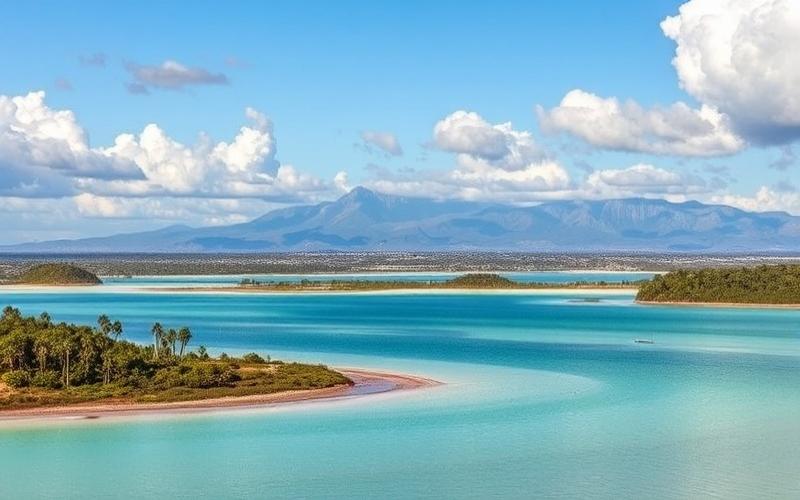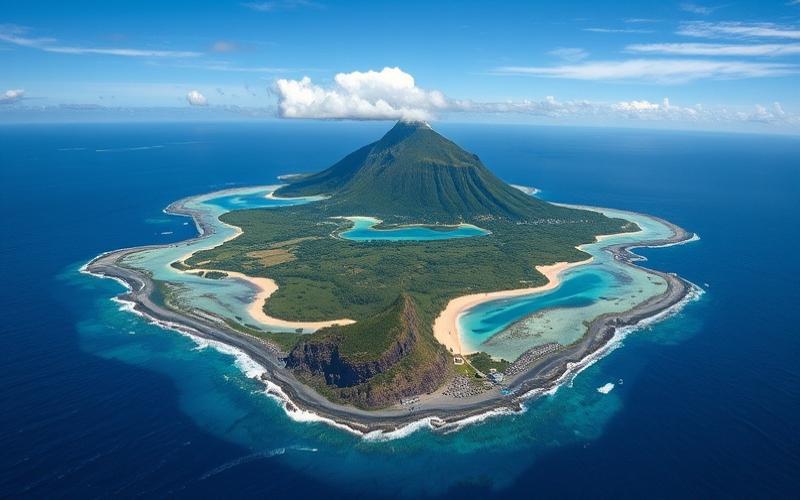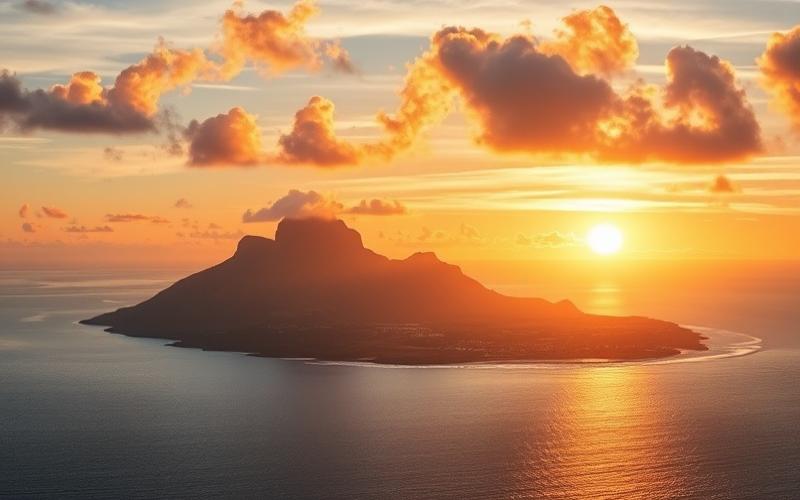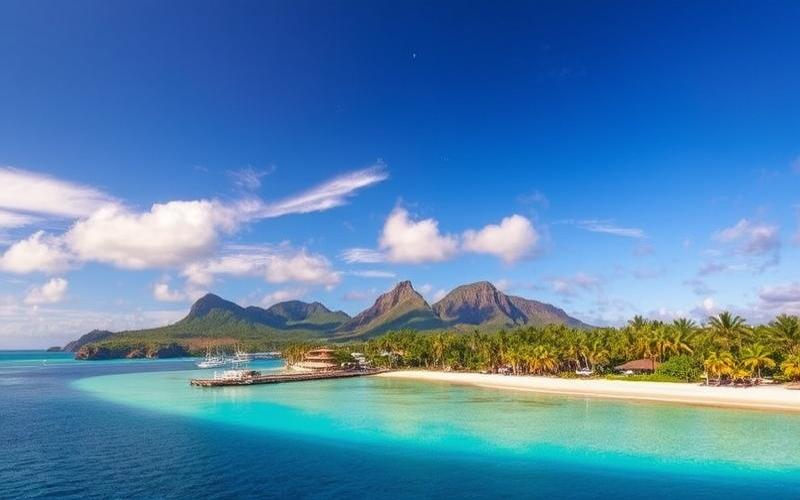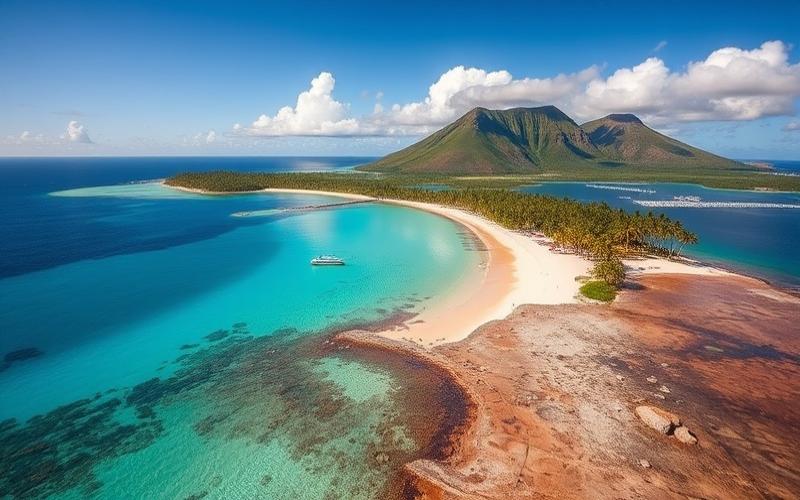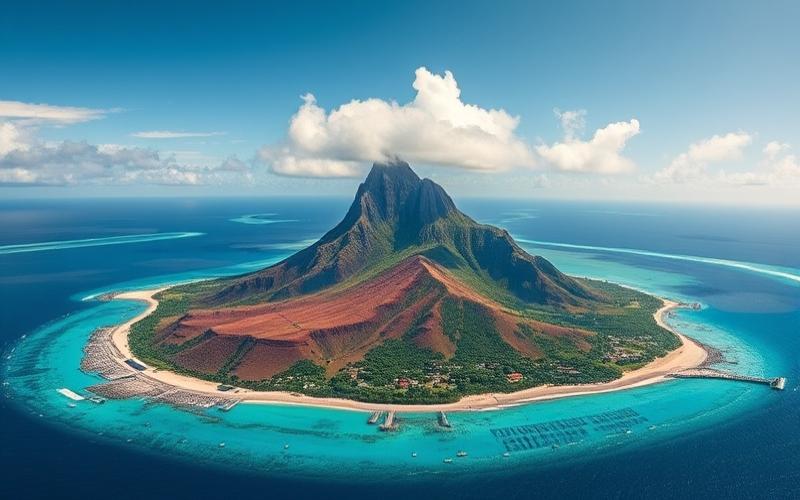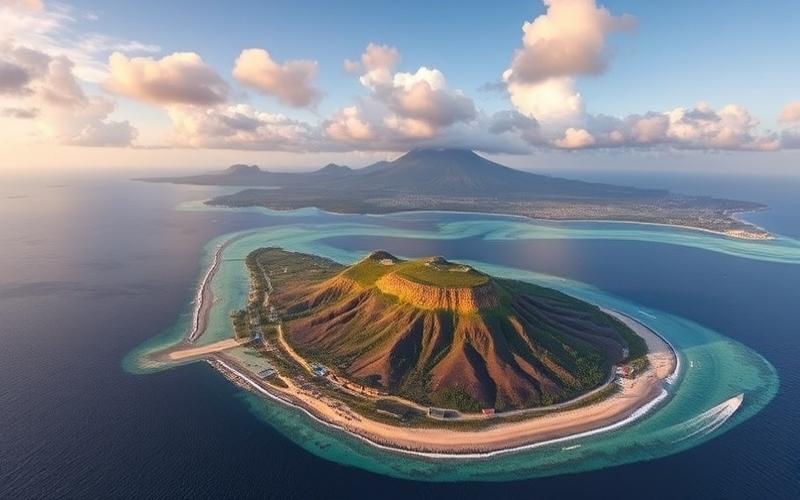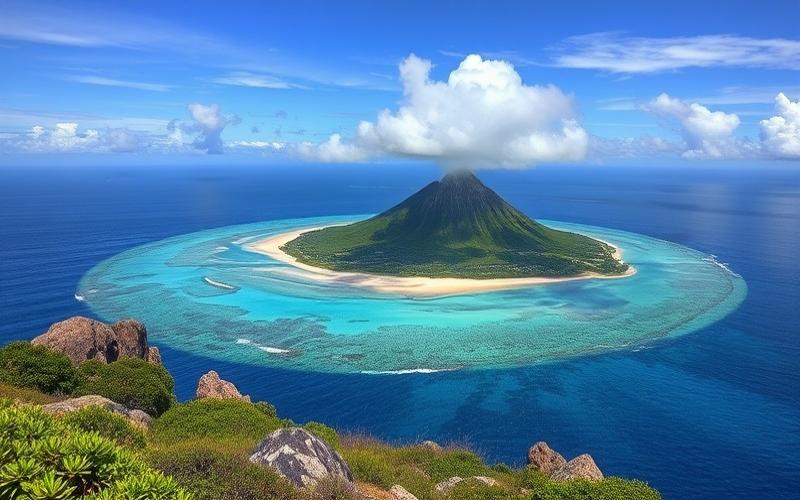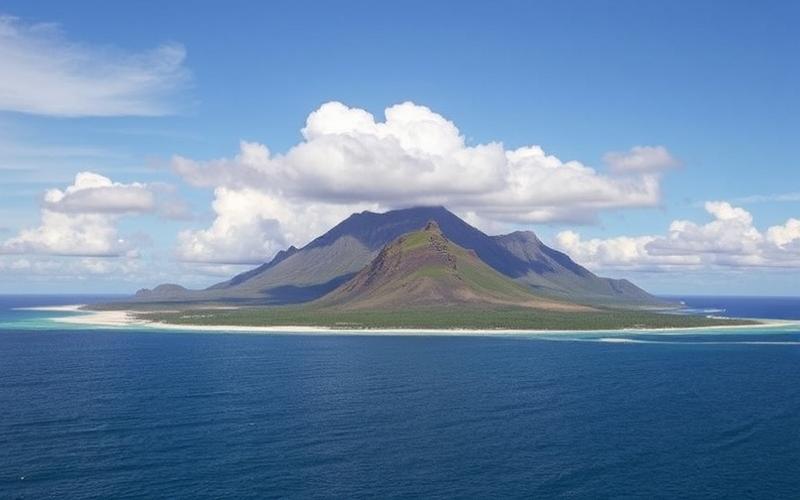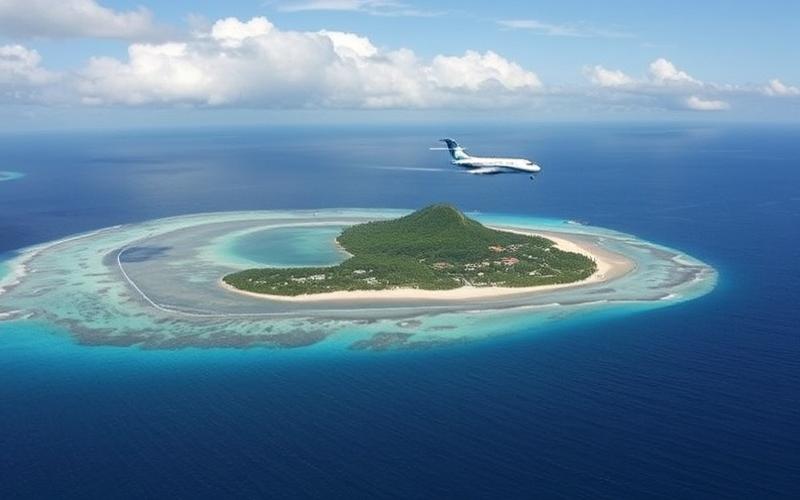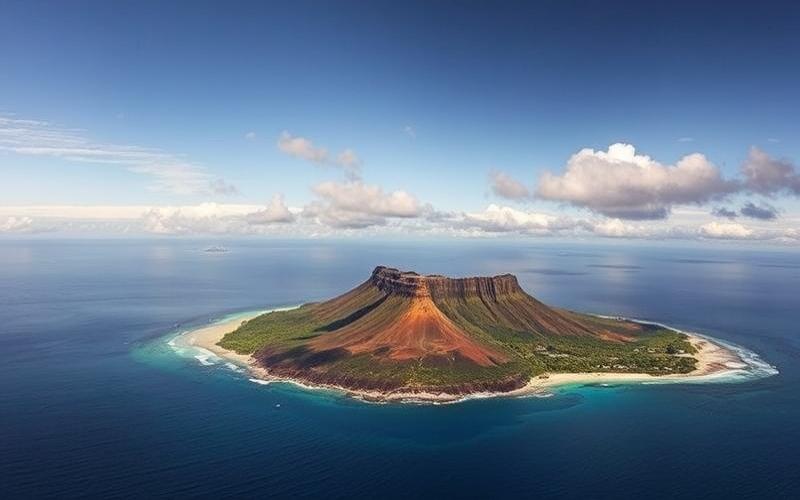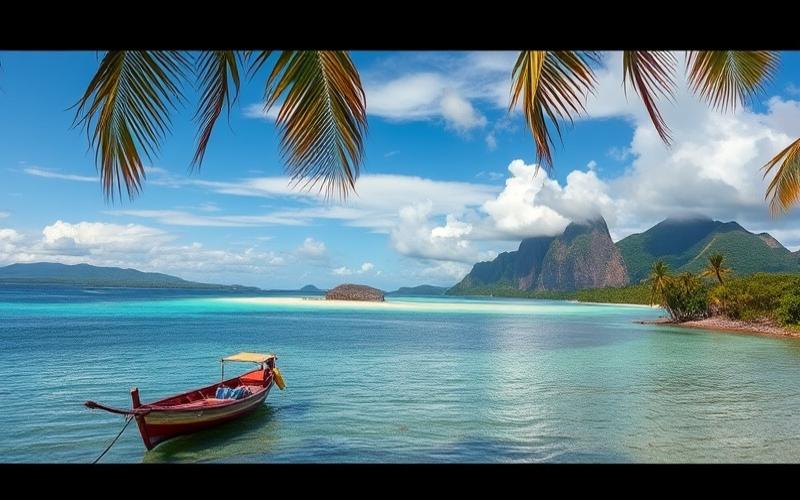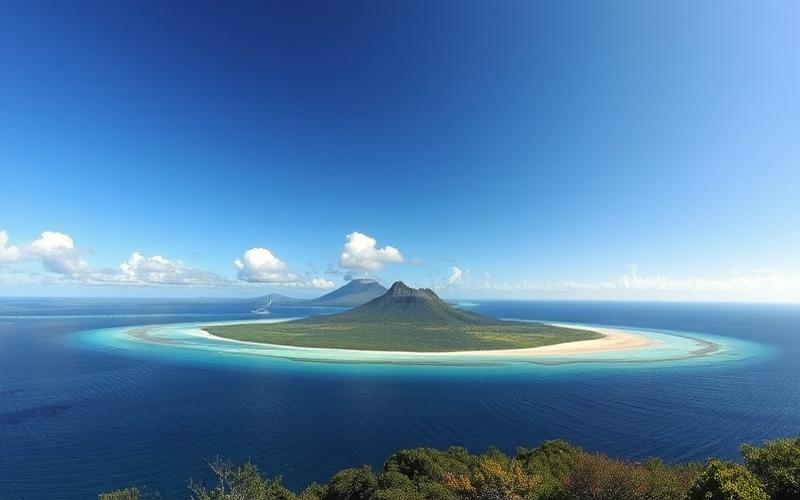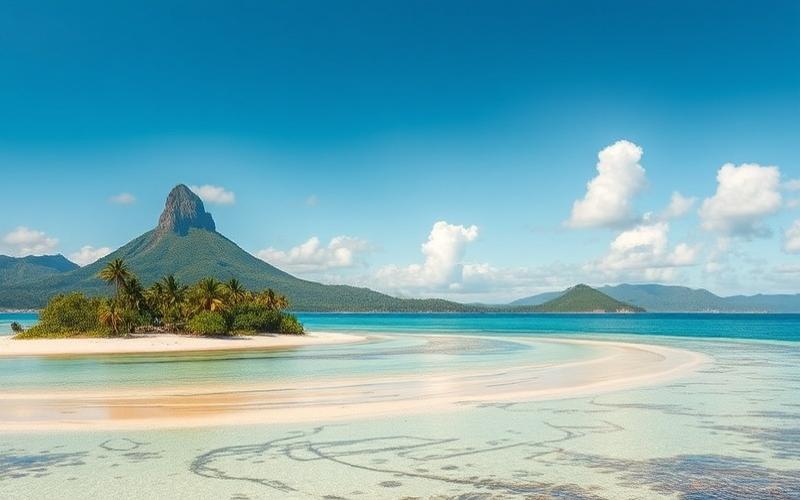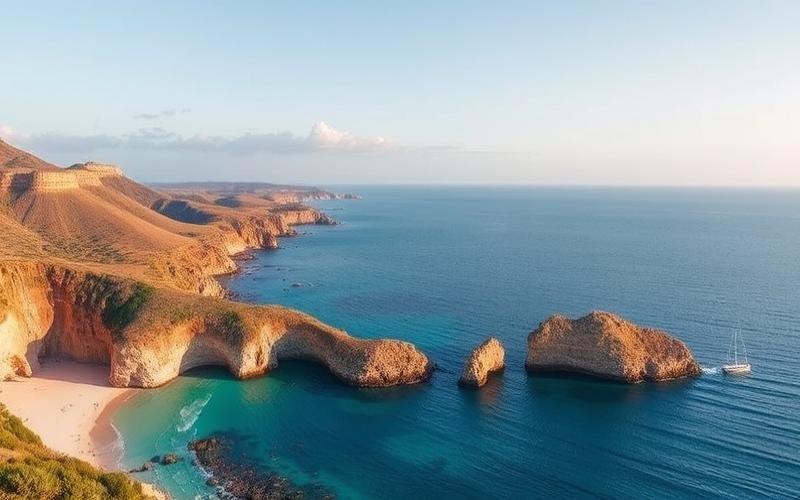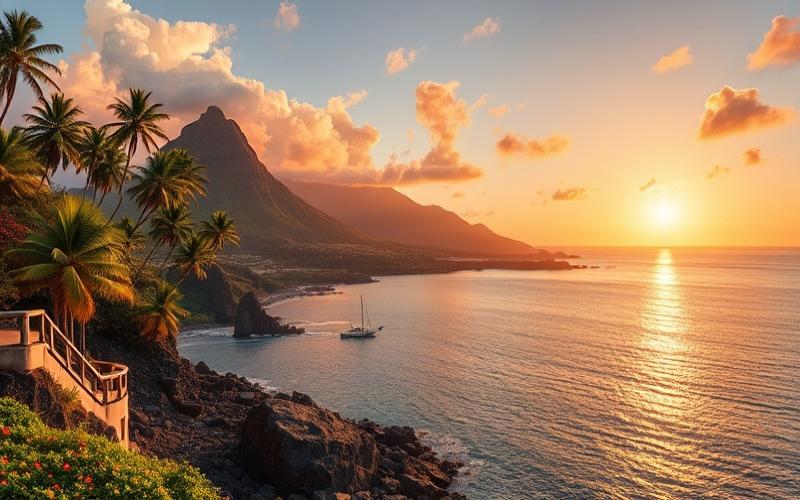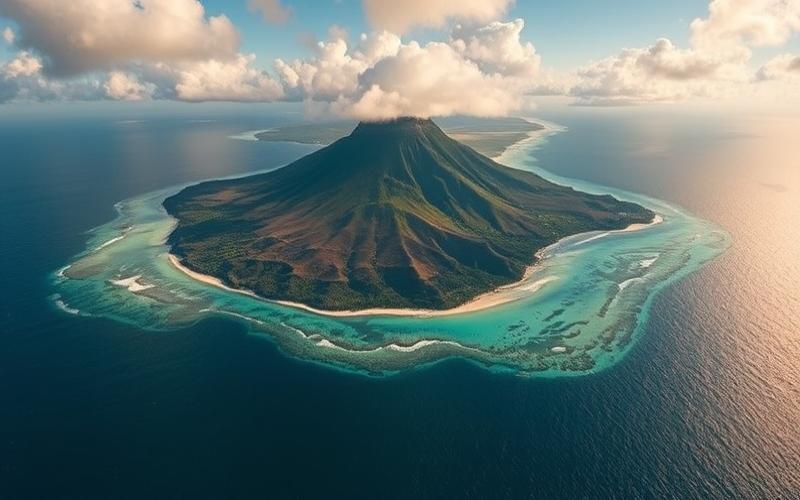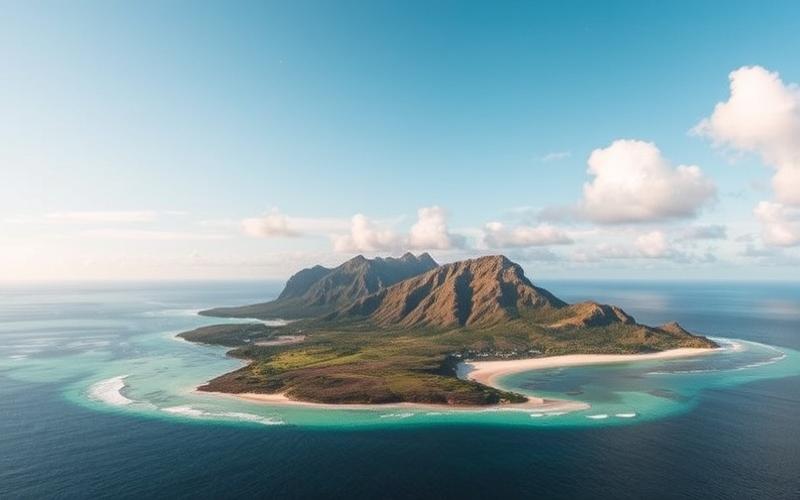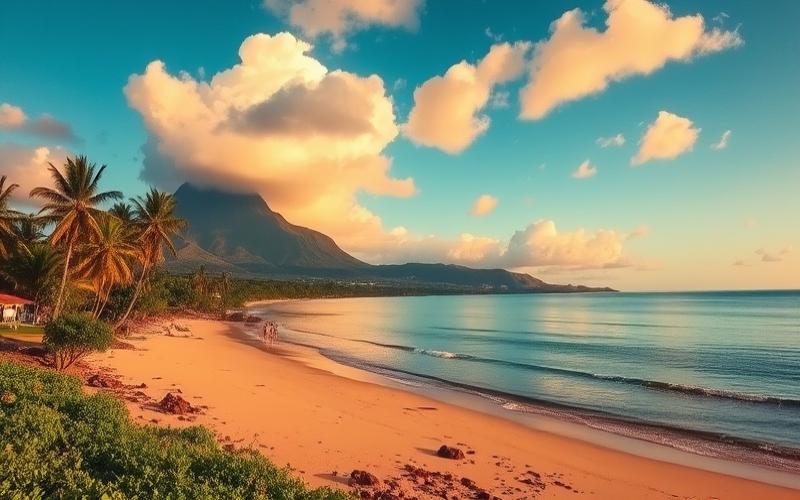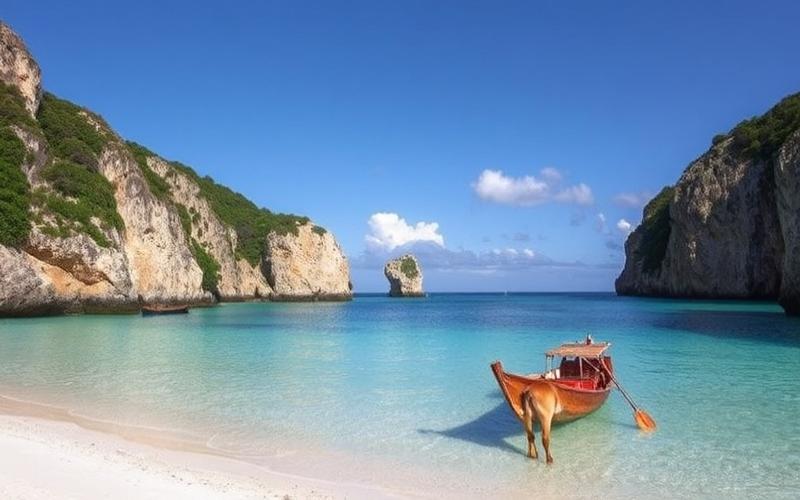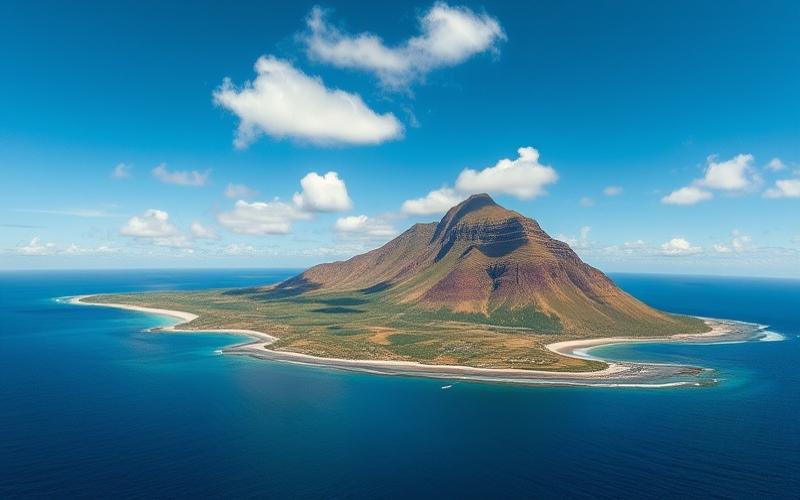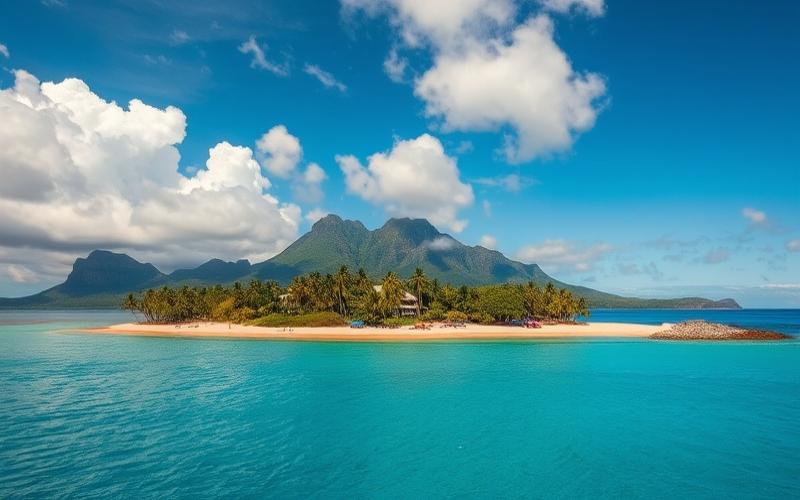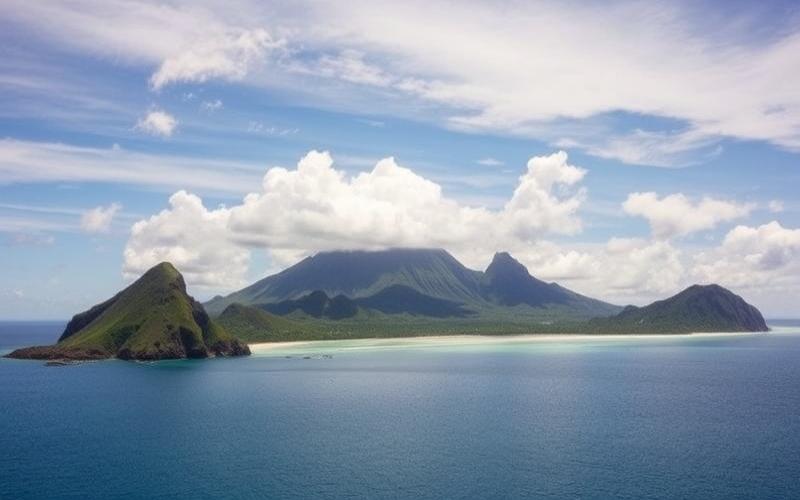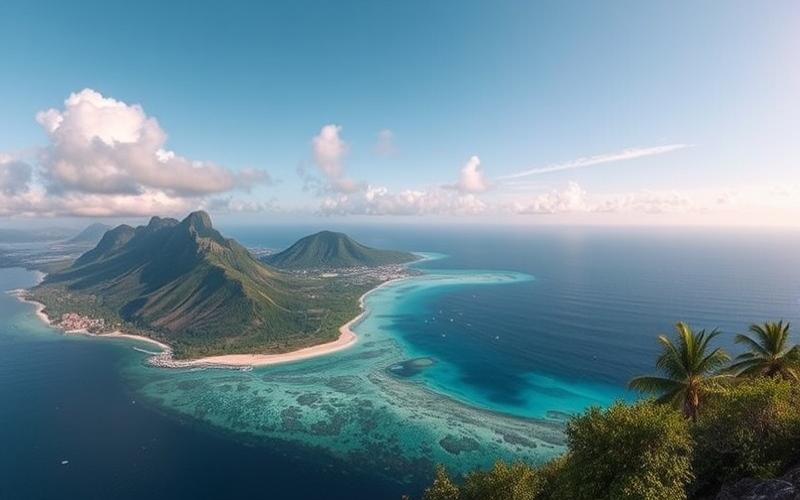
 Published on and written by Cyril Jarnias
Published on and written by Cyril Jarnias
In the heart of the Indian Ocean, Mauritius reveals unprecedented potential for investors seeking to diversify their portfolio through parking investment. At a time when urbanization is accelerating and demand for parking spaces continues to grow, this sector offers attractive opportunities to ensure stable and competitive returns. Whether you’re a seasoned investor or a novice eager to maximize your capital, understanding the dynamics and benefits of such an investment is crucial to capitalize on this booming market.
Introduction to Parking Investment in Mauritius
Parking investment in Mauritius presents several major advantages, strengthened by favorable demographic, economic, and regulatory dynamics.
Reasons for the Attractiveness of Parking Investment:
- Sustained urban growth and development of business centers lead to an increased need for parking.
- The working population represents over 70% of the total population in 2025, approximately 904,895 people likely to use a vehicle daily for professional or personal travel.
- Urban areas such as Port-Louis (administrative capital), Ebène Cybercity (technology center), Quatre Bornes, and Grand Baie (tourist and commercial zones) are experiencing growing saturation in available parking spaces.
- The gradual aging of the population does not reduce the pressure on parking in the short term, as the significant share of working individuals maintains strong demand.
Recent Statistics on the Mauritian Real Estate Market:
| Indicator | Value/Forecast |
| Total Population (2025) | 1,268,285 – 1,301,607 |
| Working Population | ~904,895 |
| Population Growth Rate (2025) | -0.23% |
| Economic Growth (GDP 2025) | +3% |
Comparison with Other Real Estate Investments:
- Residential Real Estate: Stable market but subject to a gradual demographic slowdown that could weigh on long-term valuation.
- Commercial/Office Real Estate: Increased dependence on the tourism sector and global economic fluctuations; sensitive to recent external shocks.
- Parking: Stable yield due to structural demand linked to a chronic lack of suitable public infrastructure. Less exposed to seasonal tourism cycles than hospitality or retail.
Local Regulation – Real Estate & Parking:
Local standards impose minimum quotas of spaces for any new residential or commercial project. This creates a captive market for investors specializing in collective infrastructure like private or public parking lots.
Administrative procedures are governed by the Planning and Development Act. The permit is obtained from municipal authorities after compliance with urban master plans.
Subsidies & Potential Tax Incentives:
- Possibility for certain strategic projects deemed a priority by the Mauritian state (sustainable urban mobility, smart cities, etc.) to access:
- Temporary exemptions on certain property taxes
- Partial tax relief during launch
- Accelerated administrative procedures
Recommended Geographic Areas:
| Area | Main Advantage |
| Port-Louis | Saturated administrative center |
| Ebène Cybercity | Rapid tertiary expansion |
| Quatre Bornes | Dynamic residential/commercial hub |
| Grand Baie | High tourist traffic/land pressure |
Key Economic Factors to Consider:
- Relative macroeconomic stability (+3% GDP forecast for 2025 despite a slight slowdown)
- Public policy focused on better urban management
- Demographic aging but temporary maintenance of a high active base
- High public debt potentially influencing future taxation indirectly
Investing in parking thus offers a rare combination: rental stability assured by persistent urban pressure, a favorable regulatory framework, and potential access to certain incentive measures—all with less volatility than classic residential or hospitality real estate.
Good to Know:
Investing in parking in Mauritius is an attractive opportunity, mainly due to continuous demographic growth and rising parking demand, particularly in urban areas such as Port-Louis and Grand Baie. The Mauritian real estate market shows a stable price increase, with an annual growth rate of about 5% in recent years, making it competitive compared to other real estate sectors. Investors also benefit from simplified regulations, subsidies, and sometimes tax incentives for purchasing and developing parking lots. However, it is crucial to consider local regulations that require specific permits and compliance with environmental standards. Areas near business centers and commercial complexes show strong yield potential due to a constant need for parking spaces. It is recommended to monitor economic policies and infrastructure projects that could impact long-term profitability.
Analysis of Mauritian Parking Profitability
Initial Investment Costs
- Land Acquisition: Prices vary significantly by location. For example, in sought-after residential or coastal areas like Trou aux Biches, purchasing a property with integrated parking can reach €440,000 to €500,000 for a luxury villa (price including the residence and not just the parking). The cost for land intended solely for parking will be lower but remains highly dependent on the area.
- Construction or Renovation: Creating a parking lot requires earthworks, ground marking, installation of lighting, and security equipment. For a simple surface parking lot, the average cost ranges between €300 and €600/m² (excluding land), while a covered or underground parking lot costs significantly more.
Potential Generated Revenue
| Parking Type | Average Hourly Rate | Estimated Daily Rate | Revenue Source |
|---|---|---|---|
| Downtown Street | Rs 20–30 | Rs ~200–240 | Hourly books/tickets |
| Private Parking | Rs 50/h | Rs ~350–400 | Direct payment |
- Average Annual Occupancy: In urban centers like Port-Louis or Curepipe, occupancy can exceed 70% on weekdays. On a conservative basis: estimated average annual occupancy at about 60%.
- Potential Annual Revenue (example):
- Private parking with a capacity of 20 spaces
- Gross revenue/day = (20 × Rs 350 × occupancy_rate)
- Gross revenue/year ≈ (20 × Rs 350 × 365 × 0.6 ≈ Rs 1,533,000)
Operational Expenses
- Routine Maintenance: Regular site cleaning, minor repairs.
- Security: Installation and potential maintenance of CCTV cameras; on-site personnel in some cases.
- On-site staff or external manager.
- Local taxes and insurance.
On average, these expenses represent about three months of annual rental revenue for a standard parking lot.
Tourist and Demographic Trends Impacting Demand
- Stable tourist growth in Mauritius; coastal areas such as Grand Baie see a continuous increase in seasonal car traffic.
- Growing urbanization around economic hubs (Port-Louis, Ebène).
- Increase in the number of vehicles per household in main urban areas.
Recent studies highlight that the Mauritian real estate market is particularly dynamic in coastal areas heavily frequented by tourists as well as in some satellite towns where the chronic lack of spaces enhances the attractiveness of paid parking.
Sector Comparison – Parking Investment Profitability vs. Other Real Estate/Infrastructure Sectors
| Sector | Typical Net Yield |
|---|---|
| Downtown Parking | Approximately 4–5% |
| Secondary City/Suburban Parking | Approximately 6–7% |
| Residential Real Estate | Often lower than parking |
| Commercial Real Estate | Variable (3% to more depending on location/risk) |
Parking stands out due to its low required maintenance level compared to classic residential/commercial buildings while often offering a higher net yield. Additionally, they generally benefit from increased liquidity thanks to the lower average ticket compared to classic real estate assets.
The higher net profitability observed in the parking segment is explained notably by a simplified operational structure as well as strong rental pressure in certain strategic island locations.
Regional Market References:
Analyses published on Mauritian real estate highlight a sustained increase in land value around attractive tourist/economic hubs—elements that mechanically reinforce the interest in automobile parking-related investments.
Good to Know:
Investing in parking in Mauritius requires considering several essential factors to assess profitability. Initial costs include land acquisition, often expensive in sought-after tourist areas, and construction or renovation fees. Potential revenues are substantial thanks to competitive hourly or daily rates and high average annual occupancy in urban and tourist centers such as Port-Louis or Grand Baie, where visitor influx and demographic growth stimulate demand. However, it is crucial to consider operational expenses, including maintenance, security, and personnel, which impact the profit margin. Compared to other opportunities like tourist residences or offices, parking offers simpler management and less exposure to rental risks. Regional market studies show growing interest in this niche, particularly in a context of increased urban development and rising car traffic.
Factors Influencing Parking Space Yield
The analysis of parking space yield in Mauritius highlights several key factors:
Geographic Location
- Urban areas like Port-Louis, Ebène, and Rose-Hill concentrate demand due to intense economic and administrative activity.
- Peripheral regions are considered for park-and-ride facilities with shuttles, particularly around Port-Louis to relieve downtown congestion.
Parking Rates
- Price pressure varies by zone: business centers generally apply higher rates, while some associations call for free or capped pricing to improve accessibility.
- Recent proposals aim to establish free parking coupled with a shuttle system to the city center. This strategy aims for better traffic flow but could negatively impact direct financial yield while indirectly increasing footfall.
Local Demand Linked to Commercial and Tourist Activities
- Daily flow in administrative and commercial districts generates sustained demand.
- The tourism sector is currently experiencing a notable contraction with only 95,991 visitors recorded in February 2025 compared to 109,266 during the same period the previous year (i.e., -12.1%). This decline may temporarily ease pressure on parking near tourist hubs.
Municipal Regulation, Urban Planning, and Infrastructure
- A recent strengthening of control against illegal parking is reflected in the acquisition of 255 new wheel clamps by the national police. This has the effect of increasing compliance with regulated parking in main cities.
- Voices are raised to encourage urban developments favoring more spaces dedicated to legal parking as well as incentives (park-and-ride, public transport) aimed at limiting the number of vehicles entering urban centers.
| Factor | Recent Trend | Implication on Yield |
|---|---|---|
| Location | Strong urban polarization (Port-Louis/Ebène) | High demand but increased competition |
| Pricing | Pressure towards free/lower rates | Potential negative direct impact on revenue |
| Commercial/Tourist Demand | Tourism decline (-12%) | Lower temporary profitability near tourist sites |
| Regulation | Strengthened controls | Better discipline but possible occupancy drop if inadequate supply |
Local Economic Trends
Urban Growth
- Real estate expansion in several major agglomerations mechanically stimulates demand for suitable parking spaces for both residential and tertiary use.
Tourism
- The current contraction temporarily harms revenue from tourism-related parking near hotels/beaches/cultural sites.
Recent Regulations
- Toughening against illicit practices (illegal parking), more visible since September 2023 with an increase in police immobilizations.
Summary List — Main Risks/Opportunities for Investors:
- Opportunities: high urban density; continuous real estate development; persistent needs despite tourist fluctuation
- Risks: unfavorable regulatory evolution (free/restriction); occasional saturation linked to non-compliance or lack of suitable infrastructure; increased sensitivity to local economic cycles
The current context suggests that while investment in parking spaces remains promising in certain strategic urban or peri-urban areas still benefiting from a structural deficit, it must be preceded by a detailed analysis considering both macroeconomic and sectoral trends.
Recent Data:
Total number of visitors February 2025: 95,991 (-12.1% vs. Feb. 2024)
Main Challenges:
- Maximize occupancy rate by adapting supply/pricing according to zone
- Closely monitor local regulatory developments
- Diversify locations between active commercial hubs and suburban sectors served by public transport
Good to Know:
The yield of parking spaces in Mauritius depends mainly on their strategic location, with popular tourist and commercial areas recording the highest demand. Parking rates can be optimized by considering peak periods but must remain competitive compared to neighboring infrastructure. Strict municipal regulations regarding urban planning, as well as the evolution of transport infrastructure, such as the extension of the express metro lines, also influence profitability. The tourism sector, which experienced 18% growth in 2022 according to official data, generates increased demand for parking near major attractions and shopping centers. Economic trends, notably rapid urbanization, favor the potential expansion of these investments, although assessing risks related to local market fluctuations remains crucial for investors.
Case Study: Potential of Airport Parking
Overview of Air Traffic in Mauritius and Impact on Airport Parking Demand
Air traffic in Mauritius is experiencing significant recovery post-pandemic, with traffic gradually returning to pre-crisis levels. In 2021, the number of passengers carried was 153,242, but more recent data indicates sustained growth since that period. The tourism recovery as well as the dynamism of business travel fuel this traffic increase.
The direct impact of this increase translates into growing pressure on existing airport infrastructure, particularly parking. This rise in traffic generates an increased need for parking solutions adapted to the variable flows of arrivals and departures.
Geographic Location of Main Airports and Accessibility
The Sir Seewoosagur Ramgoolam (SSR) International Airport, located in the southeast of the island near Mahébourg, concentrates almost all international traffic. It is accessible via the main highway (M1), linking Port-Louis (the capital) to the southeast, facilitating access for both local and international drivers.
| Airport | Location | Main Accessibility |
| SSR International Airport | Southeast (Plaine Magnien) | Highway M1 |
| Secondary Airports | Northern and Western Regions | Local Roads |
The centralization of traffic accentuates demand around the main SSR hub.
Current Tourism/Business Travel Trends and Influence on Parking Needs
Tourist statistics for 2025 show a marked return of international visitors as well as continuous progression in business travel. Seasonal peaks coincide with European and Asian school holidays, creating critical periods when current capacity reaches its limits.
- Continuous post-pandemic tourism growth
- Increased dynamism in organizing international conferences
- Gradual increase in the number of Mauritians traveling for personal or professional reasons
Current Pricing Structure vs. International Standards
Rates charged in Mauritian airport parking remain competitive compared to standards observed in other similar island or African destinations. However, they often offer few flexible options for different user profiles (short vs. long term).
| Type | Mauritius | International Standard |
| Hourly Rate | Moderate | Variable by region |
| Long-Term Subscription | Limited | More developed |
| Online Reservation | Rare | Standardized |
Margins therefore exist to modernize the pricing offer towards more personalization.
Expansion/Modernization Opportunities
Anticipated growth opens several avenues:
- Physical extension of existing capacities
- Digitalization: smart management via mobile applications/automatic reservations
- Integration of renewable energies & electric charging stations
- Creation of new multi-level spaces
- Introduction of premium/valet services
- Improvement of signage/accessibility for people with reduced mobility (PRM)
The sector is primarily dominated by Airports of Mauritius Co Ltd (AML), the official manager; a few subcontractors operate some complementary services.
| Main Player | Estimated Share (%) |
| Airports of Mauritius | ~80% |
| Private Operators | ~20% |
However, the concentration currently favors little competitive innovation.
Successful Examples Elsewhere & Local Applicability
Models such as those developed at Dubai International Airport or Cape Town International have focused on:
- Complete digitalization of the user journey,
- Multiplication of pricing options,
- Integrated green spaces,
These innovations are transferable thanks to the favorable Mauritian climate and national “smart island” ambitions.
Potential Challenges: Regulations/Environment/Users
Main identified challenges:
- Strict regulatory compliance related to environmentally sensitive areas around runways;
- Need for landscape integration to limit soil sealing;
- Growing client demands: enhanced security, fast payment/exit;
- Restrictive legal framework for urban planning/ecological buffer zones
- Social acceptability of massive expansion projects
- Modernizing customer experience without excessive rate inflation
Summary Key Points & Potential ROI for Investors
The local market offers strong potential thanks to a durable return towards tourist and business travel growth. Investment in this sector generally presents a good return if coupled with technological innovation/differentiated service.
- Structurally rising demand confirmed by recent trends,
- Substantial opportunities for modernizations/extensions,
- Market still weakly competitive ready for new entrants/agility,
For any strategic investor capable of bringing digital innovation and operational excellence while respecting local environmental constraints, the expected return rate remains attractive compared to other similar island real estate/tourist sectors.
Good to Know:
Air traffic in Mauritius records sustained growth, mainly due to the rise in tourism and the increase in business travel, which accentuates the demand for airport parking. The main airports, including Sir Seewoosagur Ramgoolam International, benefit from a central geographic location, facilitating access for both local and international drivers. The pricing structure of parking, although competitive compared to global standards, could be optimized by diversifying pricing options. There are significant opportunities to modernize and expand parking infrastructure to meet this growing demand, with a few major players such as Atol and Airports of Mauritius dominating the market. Examples of successful investments in airport parking at Changi Airport in Singapore show that similar models could be applied in Mauritius. However, it is crucial to consider challenges related to local regulations, environmental impacts, and growing user expectations to ensure a favorable return on investment in this promising sector.
Disclaimer: The information provided on this website is for informational purposes only and does not constitute financial, legal, or professional advice. We encourage you to consult qualified experts before making any investment, real estate, or expatriation decisions. Although we strive to maintain up-to-date and accurate information, we do not guarantee the completeness, accuracy, or timeliness of the proposed content. As investment and expatriation involve risks, we disclaim any liability for potential losses or damages arising from the use of this site. Your use of this site confirms your acceptance of these terms and your understanding of the associated risks.


